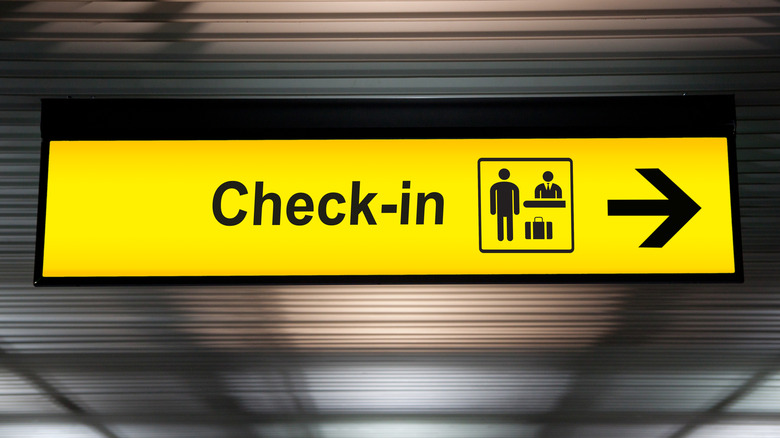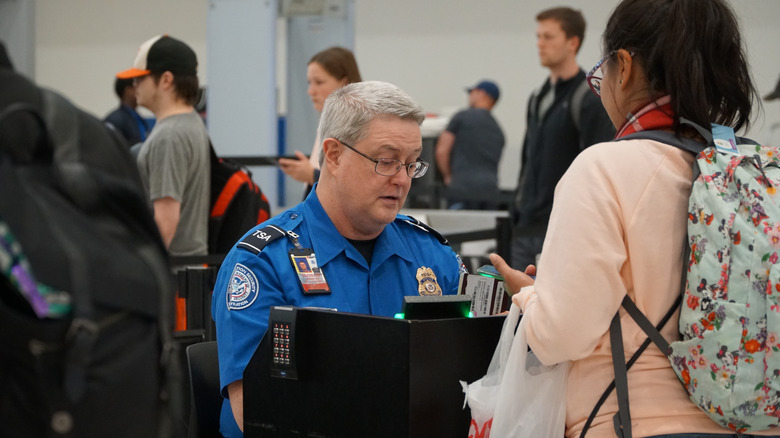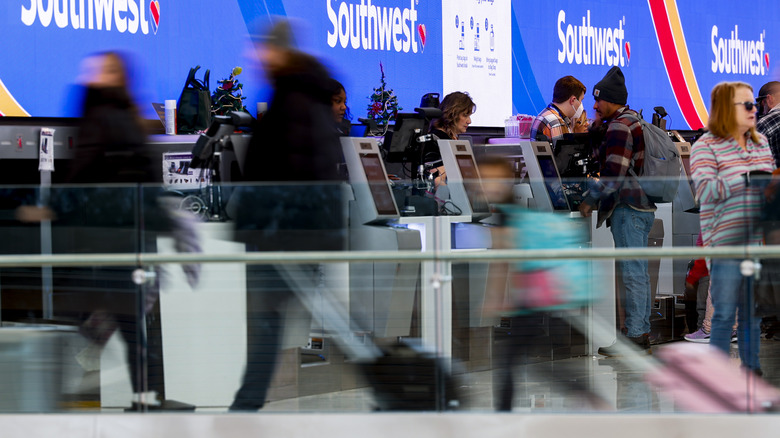What Is Real ID, And Why Do You Need It To Fly?
September 11, 2001. It's a horrific moment in time and history that will forever remain etched in the minds of New Yorkers, Americans, and people around the world. It was a day when every single one of us realized that terrorism traverses all countries and borders, even the United States. Since that fateful date, the Transportation Security Administration (TSA), has been diligent in preventing another full-on terrorist attack in flight by implementing high-tech and mandated security checks, heightening security presence, and a host of other critical steps to identify potential terrorists.
Since 2006, terrorist attacks globally have risen and fallen throughout the years, however, with an estimated 2.9 million people flying around the world each day (as of 2022), it's important to ensure that passengers entering both the air terminals and boarding the flights they've booked for travel are who they say they are. Passports, older driver's licenses, and normal IDs are no longer just enough to prove your identity. In order to keep abreast of potential terrorist threats and attacks, the Department of Homeland Security is now beginning to enforce the Real ID Act of 2005 (post 9/11), requiring all passengers flying within the United States to present a Real ID, by May 2025.
What is a Real ID, and how do you get one?
Let's do a little test run. If you have a driver's license, go ahead and take it out of your wallet, and look at the issue date. Was it issued before 2010? If it was, chances are that while your driver's license may still be valid for driving, it's missing two key elements that make it a Real ID. The first element is the gold, five-pointed star on the upper right corner of your license. After, 2010, the Department of Homeland Security mandated that all 50 states comply with the legislative law enacted after 9/11, and formerly issue all persons with a valid driver's license a Real ID. In addition, the Real ID is fixed with a Radio Frequency Identification (RFID) chip that is scanned by TSA agents at the airport.
If you don't have a driver's license, or if you haven't renewed your license since 2010, you'll be required to present other identification and documentation to verify you are who you are before getting one. A U.S. passport, social security card, and birth certificate are all valid forms of identification. Dependent upon the state you live in, check with your local Department of Motor Vehicles office for the full list of required information that you will need to present before you can be issued the Real ID card because, without one, you won't be able to fly.
Why do you need it to fly?
As mentioned previously, both the Department of Homeland Security and Transportation Security Administration are implementing the Real ID legislative act passed by Congress back in 2005 to further enforce the required identification needed to prevent terrorism. In order to do that, they need to validate that passengers 18 or older, arriving at, and boarding any commercial airline pass the official and enhanced identity checks. Should you arrive at the airport without a Real ID, you will not be able to board your flight. It's important to reiterate, the mandate for having a Real ID only applies to domestic travel within the United States.
As an added note, while the Real ID Act went into effect in 2010, delays have ensued for enforcing the issuance and required Real ID to individuals for presentation at airports. Originally, this mandate was due to take effect in May 2023, however, because of COVID-19, lockdowns, and health concerns, the Department of Homeland Security postponed the deadline to enforce this regulation to May 7, 2025. So, it's crucial that you ensure you obtain your Real ID before that date if you plan on traveling by air.


